- Home
- Ray Bradbury
The Circus of Dr Lao and Other Improbable Stories
The Circus of Dr Lao and Other Improbable Stories Read online
Front Cover
Back Cover
charles finney’s
the circus of dr. lao
has been hailed by critics as a masterpiece
of fantasy. The SATURDAY REVIEW called it
“a remarkable excursion into the fantastic” and
warns that it may “occasionally horrify
or disgust you ... It isn't a book for babes.”
“A licentious, irreverent, insolent, amusing book . . .
a satirical comment on our so-called civilization."
NEW YORK HERALD TRIBUNE
With this famous novelette setting the mood, the
celebrated science-fiction author Ray Bradbury has
selected eleven other imaginative stories by
first-rate writers such as E. B. White, Roald Dahl
and Shirley Jackson to make a rich, exciting
collection. Here the reader will get a taste of the
off-beat, the unusual —the flavor of unknown
worlds, and the excitement of our own
world seen in new dimensions.
The Bestsellers come from Bantam Books
LOOK FOR THE BANTAM ROOSTER YOUR ASSURANCE OF QUALITY!
Inside Front Cover
the circus of dr. lao
is like no circus you
ever saw—full of fantastic
happenings, crammed with
the wonder and terror of
the supernatural.
And the stories Ray Bradbury has
chosen to go with this famous novel are in keeping
with this special mood.
E. B. WHITE
tells of a machine that easily might
make man obsolete.
NIGEL KNEALE
tells of the very sweet revenge
of some be-devilled frogs.
ROALD DAHL
tells of an imaginative game that~
turns into a horrifying nightmare.
HENRY KUTTNER
tells of a man who thinks he’s
getting the better part of a bargain
with the devil.
These are only a few of the extraordinary
tales in this volume.
There goes the calliope, the trumpet,
the drum . . . Get ready for THE CIRCUS OF
DR. LAO and Other Improbable Stories — the
greatest show on—or off—the earth.
Title page
the circus
of dr. lao
and other improbable stories
edited by
ray bradbury
bantam books new york
Copyright
THE CIRCUS OF DR. LAO and Other Improbable Stories
A Bantam Book
PUBLISHED, OCTOBER, 1956
© Copyright, 1956, by Ray Bradbury. All rights reserved.
The selections in this anthology are copyrighted, and they may not be reproduced in any form without the consent of the authors, their publishers, or their agents. The copyright notices are listed below.
Copyright Notices and Acknowledgments
The Circus of Dr. Lao, by Charles G. Finney, The Viking Press, 1935. Reprinted by permission of the author. Copyright, 1935, by Charles G. Finney.
The Pond, by Nigel Kneale, reprinted from Tomato Cain and Other Stories by Nigel Kneale by permission of Alfred A. Knopf, Inc., William Collins Sons & Co. Ltd. and the author. Copyright, 1950, by Nigel Kneale.
The Hour of Letdown, by E. B. White, reprinted from The Second Tree From the Corner by E. B. White by permission of The New Yorker, Harper & Brothers and Hamish Hamilton Limited. Copyright, 1951, by E. B. White.
The Wish, by Roald Dahl, reprinted from Someone Like You by Roald Dahl by permission of Alfred A. Knopf, Inc., and Martin Seeker & Warburg, Ltd. Copyright, 1953, by Roald Dahl.
The Summer People, by Shirley Jackson, reprinted from Charm Magazine by permission of Brandt & Brandt. Copyright, 1950, by Street & Smith Publications, Inc.
Buzby’s Petrified Woman, by Loren Eiseley, reprinted from Harper’s Magazine by permission of the author. Copyright, 1948, by Harper’s Magazine.
The Resting Place, by Oliver LaFarge, reprinted from The New Yorker by permission of the author. Copyright, 1954, The New Yorker Magazine, Inc.
Threshold, by Henry Kuttner, reprinted by permission of Harold Matson Company. Copyright, 1940, Street & Smith Publications, Inc., in the U.S.A. and Great Britain; publishers of Astounding Science Fiction.
Greenface, by James H. Schmitz, reprinted from Unknown Worlds by permission of Astounding Science Fiction. Copyright, August 1943, by Street & Smith Publications, Inc.
The Limits of Walter Horton, by John Seymour Sharnik, reprinted from Charm Magazine by permission of Street & Smith Publications, Inc. Copyright, 1954, by Street & Smith Publications, Inc.
The Man Who Vanished, by Robert M. Coates, reprinted from The New Yorker by permission of the author. Copyright, 1955, The New Yorker Magazine, Inc.
Library of Congress Catalog Card Number: 56-10486
Bantam Books are published by Bantam Books, Inc. Its trade mark, consisting of the words “Bantam Books” and the portrayal of a bantam, is registered in the U. S. Patent Office and in other countries, Marca Registrada
PRINTED IN THE UNITED STATES OF AMERICA
Bantam Books, 25 West 45th Street, New York 36, N. Y.
Contents
Front Cover
Back Cover
Inside Front Cover
Title page
Copyright
Introduction
THE CIRCUS OF DR. LAO by Charles G. Finney
THE CATALOGUE
THE POND by Nigel Kneale
THE HOUR OF LETDOWN by E. B. White
THE WISH by Roald Dahl
THE SUMMER PEOPLE by Shirley Jackson
EARTH’S HOLOCAUST by Nathaniel Hawthorne
BUZBY’S PETRIFIED WOMAN by Loren C. Eisley
THE RESTING PLACE by Oliver La Farge
THRESHOLD by Henry Kuttner
GREENFACE by James H. Schmitz
THE LIMITS OF WALTER HORTON by John Seymour Sharnik
THE MAN WHO VANISHED by Robert M. Coates
Special Offer to Readers of This Book
Books Abridged advertisement
Back Page
Introduction
THE CIRCUS OF DR. LAO and the stories which follow are fantasies, not science-fiction. First then, some definitions. Science-fiction is the law-abiding citizen of imaginative literature, obeying the rules, be they physical, social, or psychological, keeping regular hours, eating punctual meals; predictable, certain, sure.
Fantasy, on the other hand, is criminal. Each fantasy assaults and breaks a particular law; the crime being hidden by the author’s felicitous thought and style which cover the body before blood is seen.
Science-fiction works hand-in-glove with the universe.
Fantasy cracks it down the middle, turns it wrong-side-out, dissolves it to invisibility, walks men through its walls, and fetches incredible circuses to town with sea-serpent, medusa, and chimera displacing zebra, ape, and armadillo.
Science-fiction balances you on the cliff.
Fantasy shoves you off.
Why let ourselves be shoved off cliffs by this so-called “escape” fiction?
Right now, I want to throw that word ‘escape’ out the window. In speaking of these stories, these fantasies, I would like to emphasize instead their contribution toward growth and responsibility, small as it may be. Stories can ony be labeled “escapist” if they solve problems by ignoring or destroying them. Mickey Spillane�
�s characters, for instance, in another genre, shoot first so they will not have to ask or answer questions later.
Thoughtful men find many things in our civilized order worth—not escaping—but growing away from: the preconceived notion, prejudice, bias, dogma, of any kind whatever. Through our creative arts, including fantastic literature, we can return to the raw stuff of environment for re-seasoning, for an understanding of the wilderness, the animal, the death which tempts us to solve problems with annihilation. Seeking help from literary sources, we often appear blasphemous and “escapist” to those still in the temple, political gymnasium, or school. Actually, we are only ‘standing off for a long clear look at the human situation, preparing to doff old burdens in order to assume the new.
We all try to sense this world with eye, ear, nose, and mouth; our hand fumbles with the slippery stuff of this material existence which, while mysterious, seems far more understandable, real, concrete, than other men’s minds. We all wish to accumulate sensation and use it to build some temporary redoubt. And perhaps DR. LAO and the stories collected here do remind us that, indeed, all such fortresses must, by the nature of existence, be made of easily broken eggshell and sheddable armour. Man should not live to keep any single political or philosophical architecture neat, clean, and impregnable; rather such frameworks should exist for use, to be razed and burnt, once their time is past.
Of course, not only the fantasy, but all writing of any quality releases us from conformity, delivers us into other people’s lives, habits and customs, engages our sympathies for alien causes, and revitalizes our senses. Good writing can move in either of two directions. It can set down what seem immediately and absolutely true observations about the real world and mankind. Then, if we desire, a second process can take over, the Romantic process which etches the world and man as the writer would like them to be or as he sees them through a specially ground, a rose-tinted, or a grotesquely warped lens.
Fantasy, it follows, is a Romantic product. Ignoring evil, it can manufacture outsize sculptures of man toward which he may strive ideally. Or, reversing the order, it can ignore the good, show us the pocks and sores on our ill-lit souls, thus force-ventilating, force-growing, frightening us on toward maturity. It is up to the individual author to decide whether he will call people on with beauty or shock them to action with evil revelation.
The fantasy, then, attempts to disrupt the physical world in order to bring change to the heart and mind. Lionel Trilling’s definition of Romance seems apt here. He speaks of it as “a synonym for the will in its creative aspect, especially in its aspect of moral creativeness, as it subjects itself to criticism and conceives for itself new states of being.” So the fantasy, like the novel of ideas, handles those parts of reality which Henry James labeled as “the things we cannot possibly not know” and moves beyond them to his “beautiful circuit of thought and desire.”
More simply, facing a flood, priests and politicians often cry, “I’m made of cork!” The writer of fantasy replies, “You’re made of iron!” After the deluge, only those who prove buoyant of imagination and free of unnecessary religious or political deadweight can be found afloat, softly whistling in the calmed billows.
Down through history, the fantasist can be heard protesting that, after all, the Emperor is naked, the Mystery is unsolved, so where do we go from here?
At such times, the fantasy does its job more quickly, more efficiently, than other literary forms. From Dante’s DIVINE COMEDY to FAUST to MOBY DICK, good and evil are rendered in concrete, understandable images ripe for discussion. Such tales as Hawthorne’s EARTH’S HOLOCAUST, here included, shrink pomp and ceremony to mechanical-toy size.
THE CIRCUS OF DR. LAO’s cargo of mythological beasts approaches, as did Hawthorne, Melville, and countless others, the enigma of good and evil, the real and the romantic, shakes the reader severely, threatens some of his most cherished conceptions, and departs having offered no cure-all solutions. The reader, like the inhabitants of the small desert town, is left with a strewn jigsaw which he must fit together in his own time, according to his own temper, believing or disbelieving the entire menagerie, depending on his real or romantic needs.
There is a fifty-fifty chance you may emerge from the good Doctor’s tent vaguely dissatisfied with questions posed and left unanswered. But we must examine not what Mr. Finney might have done (and I, for one, am curious to know the circus’s effects on the futures of the people of Abalone, Arizona) but what he really accomplished with his materials.
Certainly Mr. Finney has given us a long stare at Reality, and done so by dressing it up in fantastic guises. He catches us off guard by pretending to show us something not real, which, at a crucial moment, unshells itself to reveal the raw center of existence. Too late, we turn away. Eyes shut, book closed, we examine his images in private. In the satyr we see animal lusts and actualities; in the Hound of the Hedges we find idealized a “hint of the goal of life,” the “apogee of all that life could ever promise,” the romantic conception of all “beauty and gentleness and grace.”
“The first to catch a circus in a lie is a boy.” Reversing this familiar saying, we may well observe that the traveling Circus of Dr. Lao catches life in many of its lies.
The other stories collected here infract, in one way or another, many seemingly durable laws. Shirley Jackson’s THE SUMMER PEOPLE nearly destroys for all time the bromide that when the chips are down, loving kindness lies deep in every human heart. Its element of fantasy surprises the reader like a winter wind blowing quietly on an August afternoon.
Loren Eiseley’s BUZBY’S PETRIFIED WOMAN proves mind over matter by shaping stone in the likeness of a cherished and most secret dream.
Most of these stories point a moral, even if as in E. B. White’s THE HOUR OF LETDOWN it is only “prepare your dignity for that future when man, in a machine world, is indeed a minority,” or, citing Nigel Kneale’s THE POND, “do unto frogs as you would have them do unto you.”
But, morality and symbolism to one side, these stories are recommended, above all, because they are fine entertainment. I make no plea for the moral or symbolic fantasy alone. In spite of world conditions today, we can certainly indulge in even those fantasies, say, of Edgar Rice Burroughs and A. Merritt, whose sole purpose is enchantment and high adventure. In practical terms, they make life worth living, survival important, for millions of boys each year. I don’t recall looking upon Jules Verne’s books as moral classics, but there is no doubt that their imaginative qualities stimulated three boys to grow up, one to invent the first practical submarine, another to become one of our most famous explorers of caves, and the third, Admiral Byrd, to say, on the eve of his departure for the Anarctic, “Jules Verne leads me.”
So we find that even when we appear to be ruining our minds with what seems completely irresponsible fiction, the end-product is often an electrifying response to the world.
We feel the need to wake or sleep, eat or fast, accept or reject existence. We embrace the golden cocktail-hour image of ourselves, or tremble at the stark three o’clock of a sleepless morning reflection we find in our bedroom mirror. Somewhere between lies truth. Searching for the mean, our arts follow cycles of vigorous and brutal certainty, or tenuous theory and dream.
Man lives by creating and creates by alternating wonder with criticism followed by new states of wonder. Here in this book, then, new states of wonder, followed in your own good time, if you desire, by critical assaults which may burn Dr. Lao’s miraculous show to earth. No matter; others, happening by, will raise its tents again. There goes the whistle, the trumpet, the drum: you cannot walk through walls, you can walk through walls; the Indian dead have no tongues, the Indian dead speak to those who listen; petrified rock and the beauty of women are separate things, worn rock and the beauty of women are one, when the desert wind blows.
The circus moves and, moving, takes us with it from some mysterious beginning to some unknowable end. As privileged passengers, each of us
put here by a blind world to see what it itself cannot see, perhaps this circus and the stories which form its sideshows, may for a time help us put off our personal bickerings to make the journey profitable to the senses.
This collection is dedicated to Saul David, of Bantam Books, who waited three years for the mountain to deliver forth the mouse; and to William F. Nolan, for suggestions and help all down the line. Because of them, the show is on the road.
Ray Bradbury
February 5th, 1956
THE CIRCUS OF DR. LAO by Charles G. Finney
In the Abalone (Arizona) Morning Tribune for August third there appeared on page five an advertisement eight columns wide and twenty-one inches long. In type faces grading from small pica to ninety-six point the advertisement told of a circus to be held in Abalone that day, the tents to be spread upon a vacant field on the banks of the Santa Ana River, a bald spot in the city’s growth surrounded by all manner of houses and habitations.
Floridly worded, the advertisement made claims which even Phineas Taylor Barnum might have hedged at advancing. It alleged for the show’s female personnel a pulchritude impossible to equal in any golden age of beauty or physical culture. The mind of man could not conceive of women more beautiful than were the charmers of this circus. Though the whole race of man were bred for feminine beauty as the whole race of Jersey cattle is bred for butterfat, even then lovelier women could not be produced than the ones who graced this show.

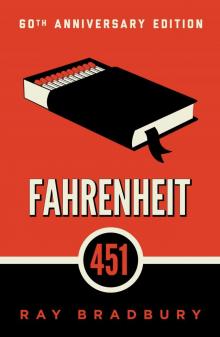 Fahrenheit 451
Fahrenheit 451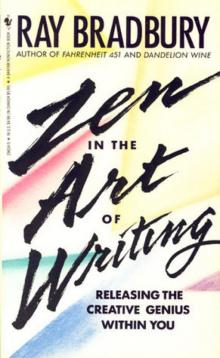 Zen in the Art of Writing
Zen in the Art of Writing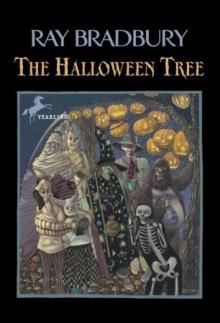 The Halloween Tree
The Halloween Tree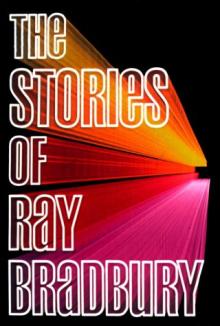 The Stories of Ray Bradbury
The Stories of Ray Bradbury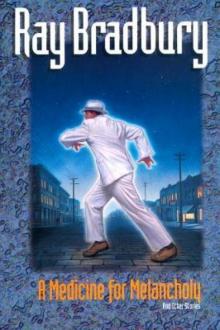 A Medicine for Melancholy and Other Stories
A Medicine for Melancholy and Other Stories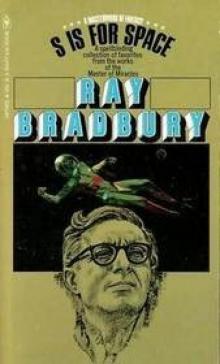 S Is for Space
S Is for Space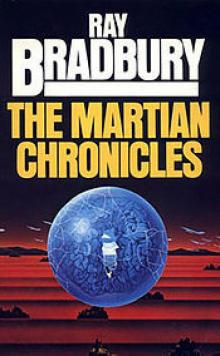 The Martian Chronicles
The Martian Chronicles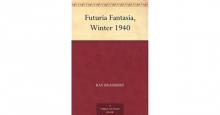 Futuria Fantasia, Winter 1940
Futuria Fantasia, Winter 1940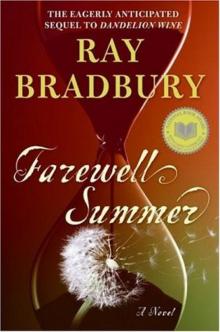 Farewell Summer
Farewell Summer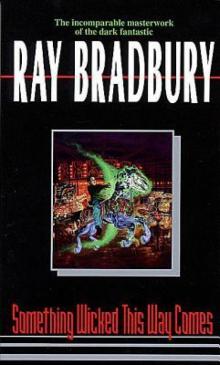 Something Wicked This Way Comes
Something Wicked This Way Comes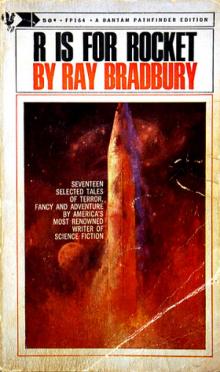 R Is for Rocket
R Is for Rocket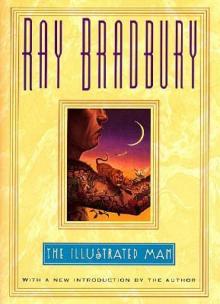 The Illustrated Man
The Illustrated Man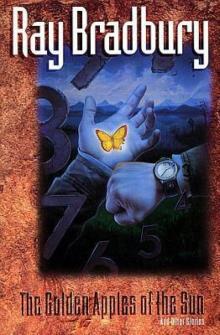 The Golden Apples of the Sun
The Golden Apples of the Sun Dandelion Wine
Dandelion Wine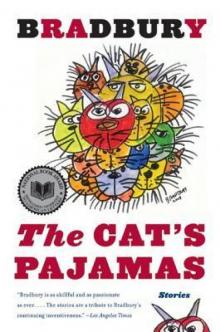 The Cat's Pajamas
The Cat's Pajamas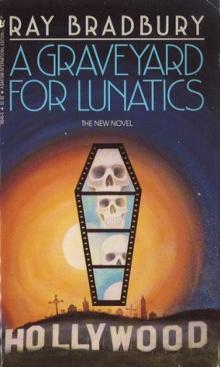 A Graveyard for Lunatics
A Graveyard for Lunatics The Playground
The Playground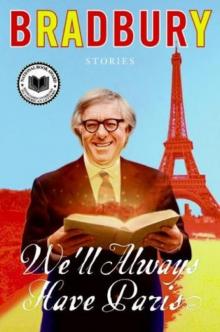 We'll Always Have Paris: Stories
We'll Always Have Paris: Stories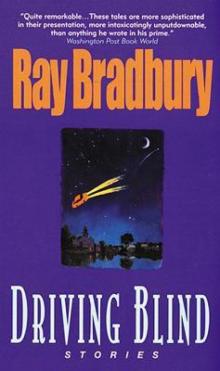 Driving Blind
Driving Blind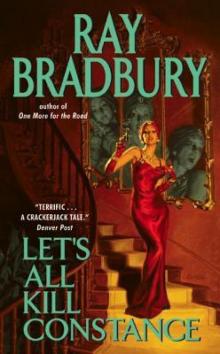 Let's All Kill Constance
Let's All Kill Constance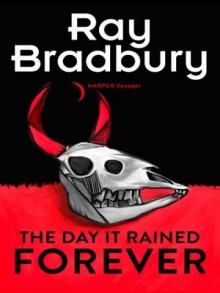 The Day It Rained Forever
The Day It Rained Forever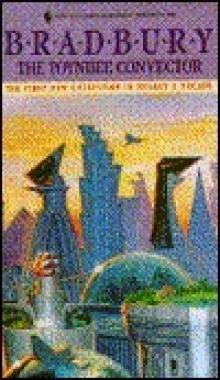 The Toynbee Convector
The Toynbee Convector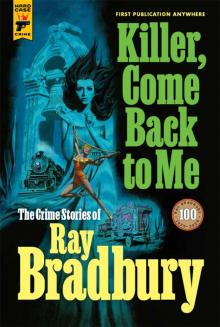 Killer, Come Back to Me
Killer, Come Back to Me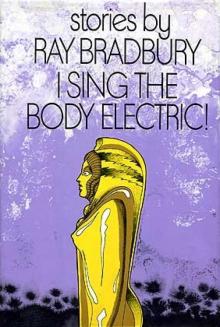 I Sing the Body Electric
I Sing the Body Electric A Little Journey
A Little Journey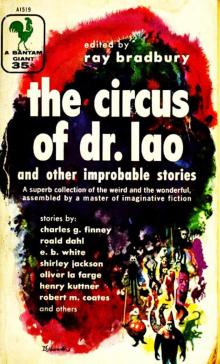 The Circus of Dr Lao and Other Improbable Stories
The Circus of Dr Lao and Other Improbable Stories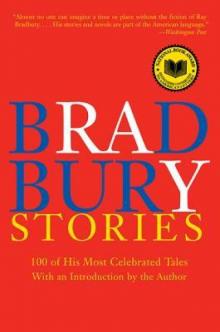 Bradbury Stories: 100 of His Most Celebrated Tales
Bradbury Stories: 100 of His Most Celebrated Tales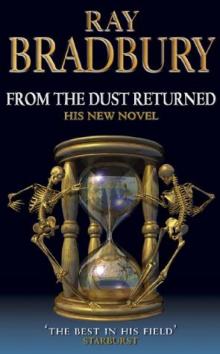 From the Dust Returned
From the Dust Returned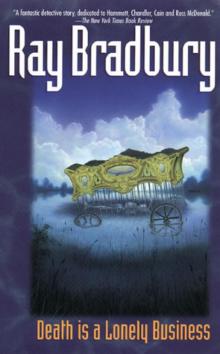 Death Is a Lonely Business
Death Is a Lonely Business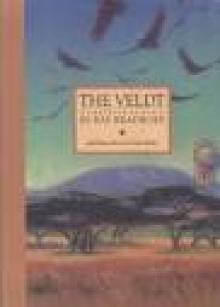 THE VELDT
THE VELDT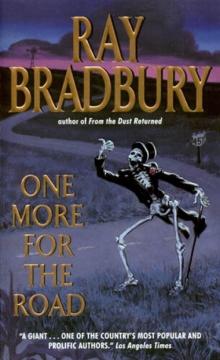 One More for the Road
One More for the Road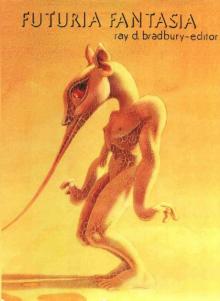 Futuria Fantasia, Summer 1939
Futuria Fantasia, Summer 1939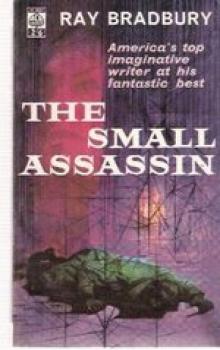 The Small Assassin
The Small Assassin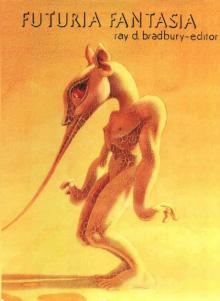 Futuria Fantasia, Fall 1939
Futuria Fantasia, Fall 1939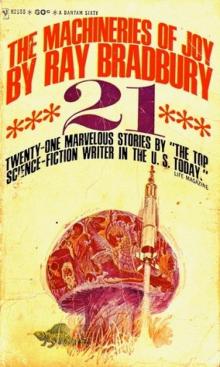 Machineries of Joy
Machineries of Joy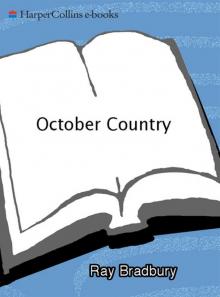 The October Country
The October Country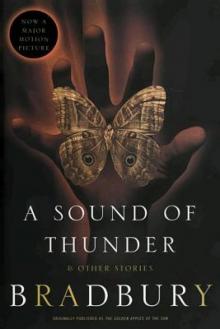 A Sound of Thunder and Other Stories
A Sound of Thunder and Other Stories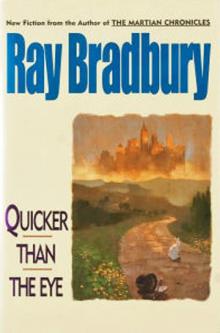 Quicker Than the Eye
Quicker Than the Eye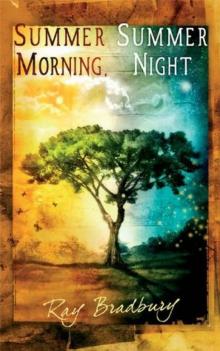 Summer Morning, Summer Night
Summer Morning, Summer Night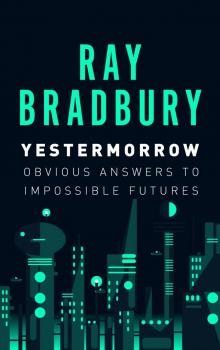 Yestermorrow
Yestermorrow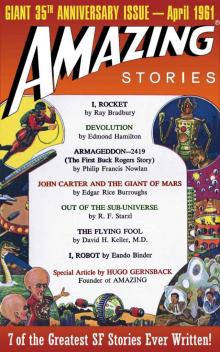 Amazing Stories: Giant 35th Anniversary Issue (Amazing Stories Classics)
Amazing Stories: Giant 35th Anniversary Issue (Amazing Stories Classics)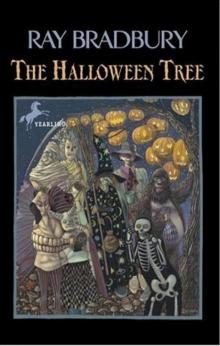 (1972) The Halloween Tree
(1972) The Halloween Tree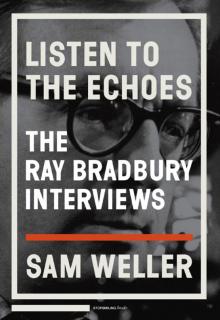 Listen to the Echoes
Listen to the Echoes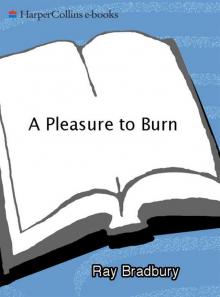 A Pleasure to Burn
A Pleasure to Burn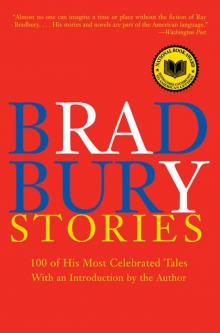 Bradbury Stories
Bradbury Stories Bradbury Speaks
Bradbury Speaks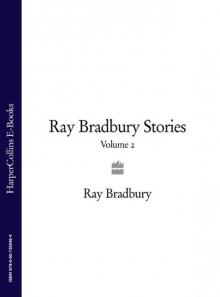 Ray Bradbury Stories Volume 2
Ray Bradbury Stories Volume 2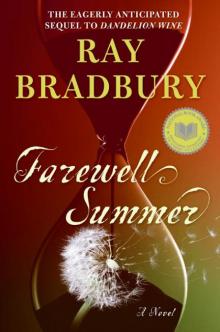 Farewell Summer gt-2
Farewell Summer gt-2 The Lost Bradbury
The Lost Bradbury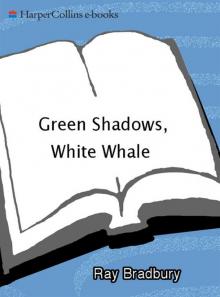 Green Shadows, White Whale
Green Shadows, White Whale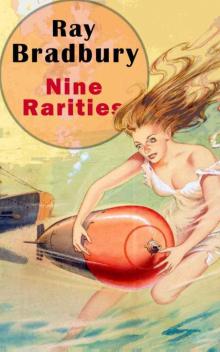 Nine Rarities
Nine Rarities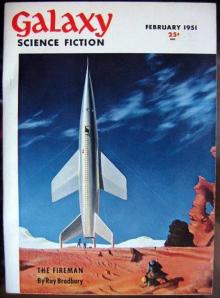 The Fireman
The Fireman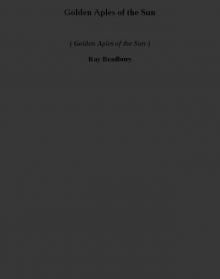 Golden Aples of the Sun (golden aples of the sun)
Golden Aples of the Sun (golden aples of the sun)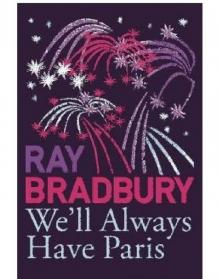 We'll Always Have Paris
We'll Always Have Paris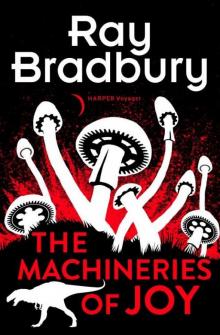 The Machineries of Joy
The Machineries of Joy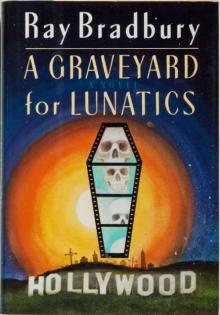 A Graveyard for Lunatics cm-2
A Graveyard for Lunatics cm-2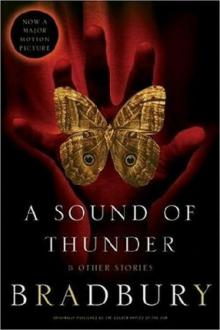 The Sound of Thunder
The Sound of Thunder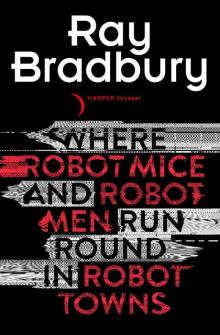 Where Robot Mice and Robot Men Run Round In Robot Towns
Where Robot Mice and Robot Men Run Round In Robot Towns